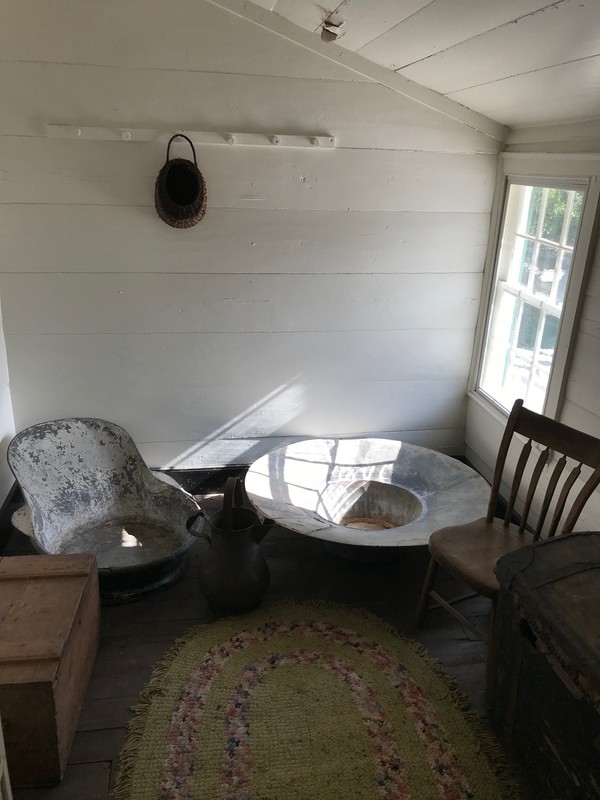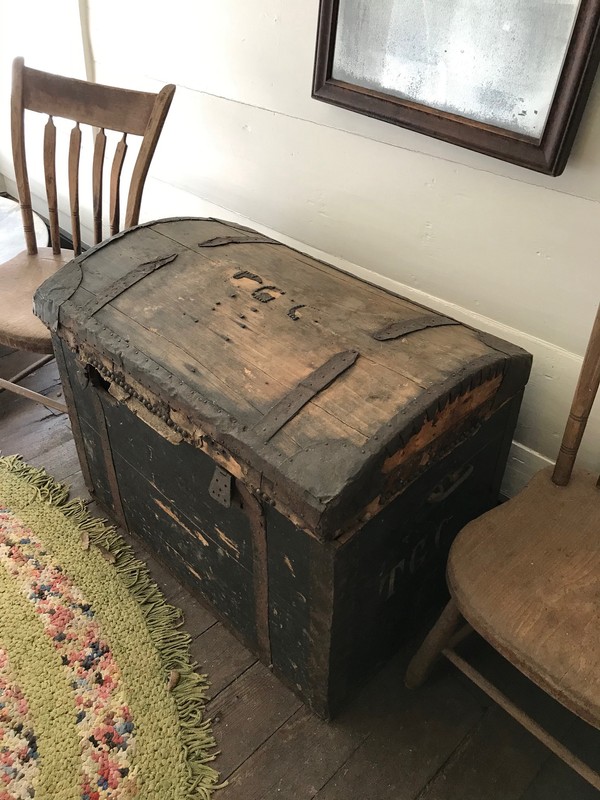Upstairs Fort Hill-Second Dressing Room
Introduction
Text-to-speech Audio
Images
Second Dressing Room and Hat Tub

Thomas Green Clemson Travel Case

Backstory and Context
Text-to-speech Audio
Before Floride and her children began to call Fort Hill their permanent home, around 1831, this room was used solely as extra storage space for the large travel cases which belonged to the Calhoun family. The luggage would have needed to carry no less than a six-month supply of books, clothes, and other necessities for the family's numerous trips to Washington, D.C. and to Bath plantation in Abbeville, S.C. Even after the family officially relocated to Fort Hill, this room would have stored some of this luggage and, later, some of the luggage which belonged to the Clemson family.
Aside from storage space, this room also served as a dressing room for grooming. Enslaved domestic workers would have pumped the water for the family members' baths at the Spring House outside the home, carried the water to be heated over a fire, hauled the water up a narrow set of stairs at the back of the home, assisted with the bathing as needed, before finally carrying the waste water back outside to be dumped.
The window in the interior wall of the dressing room is a unique feature. This dressing room was not an original part of the home, and the wall on the left was the original exterior wall. When the family found themselves in need of more space and more storage room, this dressing room was constructed and the exterior window became an interesting interior feature of the home.
Cite This Entry
Caroline M. Ross on behalf of Fort Hill. "Upstairs Fort Hill-Second Dressing Room." Clio: Your Guide to History. July 31, 2020. Accessed April 1, 2025. https://theclio.com/entry/68030/tour/9
Sources
“Educational Resources | Clemson University, South Carolina,” accessed May 21, 2020, https://www.clemson.edu/about/history/properties/ed.html.
“Floride Bonneau Colhoun Calhoun | Clemson University, South Carolina,” accessed May 21, 2020, https://www.clemson.edu/about/history/bios/floride-calhoun.html.
“Fort Hill, Clemson, SC,” South Carolina ETV, June 24, 2019, https://www.scetv.org/fort-hill-clemson-sc.
image courtesy of Fort Hill
image courtesy of Fort Hill

